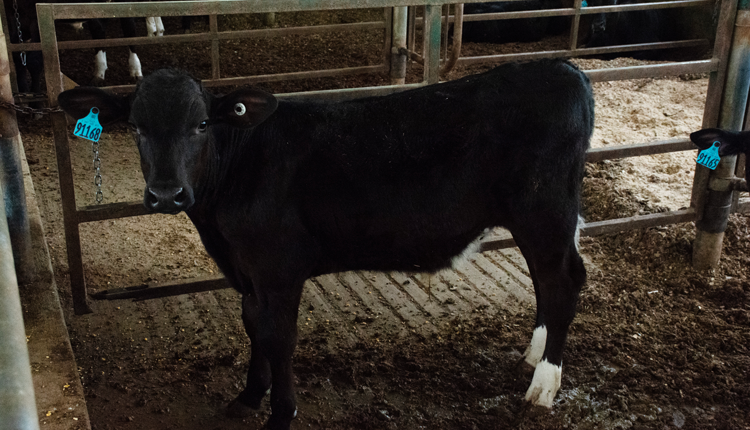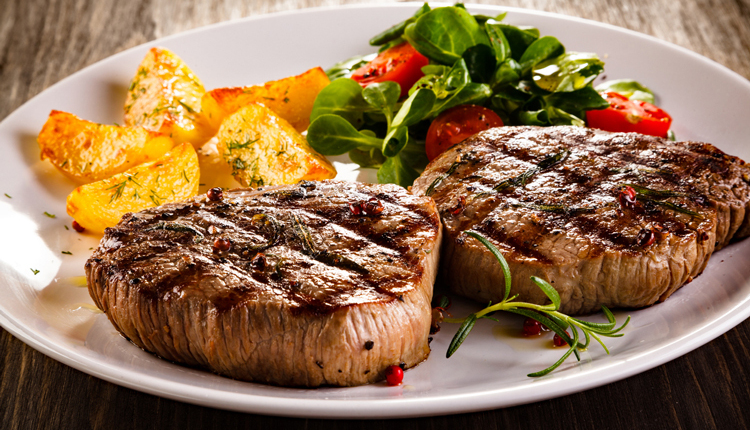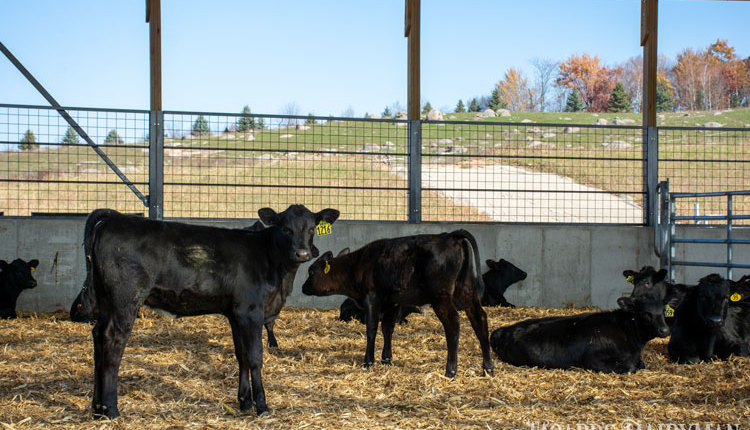Beef prices are exceptionally high. Beef cattle numbers are near record lows. Is now the time for you to join the ranks of dairy beef producers?
Before you dive into raising steers on your dairy operation, Iowa State Extension beef field specialists ask you to consider the following:
Cash flow
Think about how raising dairy steers will impact both your short-term and long-term cash flow. For instance, income from bull calves will be delayed 14 to 18 months until those animals are sold. With bull calf prices where they are now, that could definitely lower short-term income.
Also, steers, particularly Holsteins, eat a lot, so that will impact feed expenses immediately. Other smaller, but still significant, expenses include veterinary care, bedding (dairy steers tend to have higher water intake, more urine output and a need for more bedding) and the risk of death loss.
Feed supply
Raising dairy steers will put some stress on both purchased and homegrown feed inventories. Do you have extra feed available, or are you able to purchase corn and roughages at a reasonable price?
Holstein steers have an 8 to 12 percent higher maintenance energy requirement than beef breeds, so they need about that much more feed. Since milk is your main source of income, don't let steer feed needs negatively affect the milking herd's ration.
Labor
Steers require less routine work than the milking cows, but daily tasks are still necessary. Feeding, cleaning and bedding must happen every day, plus any other routine or unexpected health or facility maintenance tasks.
Most dairy farms don't have a lot of extra labor just sitting around, so think about who will do the work before adding a dairy beef enterprise to the mix.
Facilities
More than simply space, do you have the right facilities to raise dairy steers? Older buildings may need to be remodeled to fit the needs. Steers, and especially calves, require basically the same space and ventilation features as their female herdmates.
Also note that dairy beef are less cold tolerant than beef breeds, so some protection from winter cold and winds is necessary.
Market Access
Finally, evaluate your market opportunities. Do you live within a reasonable distance to a sale barn or processing plant that will accept dairy beef?
Be aware that dairy beef steers often receive a discounted price compared to beef cattle due to lighter muscling, smaller, more elongated ribeyes, lower dressing percentage due to higher bone to muscle ratio, and more internal fat and less external fat.
Raising dairy steers can be a successful enterprise, and with current market conditions, it's definitely worth thinking about. First, though, ask yourself these important questions before beefing up your dairy.

The author is an associate editor and covers animal health, dairy housing and equipment, and nutrient management. She grew up on a dairy farm near Plymouth, Wis., and previously served as a University of Wisconsin agricultural extension agent. She received a master's degree from North Carolina State University and a bachelor's from University of Wisconsin-Madison.
Before you dive into raising steers on your dairy operation, Iowa State Extension beef field specialists ask you to consider the following:
Cash flow
Think about how raising dairy steers will impact both your short-term and long-term cash flow. For instance, income from bull calves will be delayed 14 to 18 months until those animals are sold. With bull calf prices where they are now, that could definitely lower short-term income.
Also, steers, particularly Holsteins, eat a lot, so that will impact feed expenses immediately. Other smaller, but still significant, expenses include veterinary care, bedding (dairy steers tend to have higher water intake, more urine output and a need for more bedding) and the risk of death loss.
Feed supply
Raising dairy steers will put some stress on both purchased and homegrown feed inventories. Do you have extra feed available, or are you able to purchase corn and roughages at a reasonable price?
Holstein steers have an 8 to 12 percent higher maintenance energy requirement than beef breeds, so they need about that much more feed. Since milk is your main source of income, don't let steer feed needs negatively affect the milking herd's ration.
Labor
Steers require less routine work than the milking cows, but daily tasks are still necessary. Feeding, cleaning and bedding must happen every day, plus any other routine or unexpected health or facility maintenance tasks.
Most dairy farms don't have a lot of extra labor just sitting around, so think about who will do the work before adding a dairy beef enterprise to the mix.
Facilities
More than simply space, do you have the right facilities to raise dairy steers? Older buildings may need to be remodeled to fit the needs. Steers, and especially calves, require basically the same space and ventilation features as their female herdmates.
Also note that dairy beef are less cold tolerant than beef breeds, so some protection from winter cold and winds is necessary.
Market Access
Finally, evaluate your market opportunities. Do you live within a reasonable distance to a sale barn or processing plant that will accept dairy beef?
Be aware that dairy beef steers often receive a discounted price compared to beef cattle due to lighter muscling, smaller, more elongated ribeyes, lower dressing percentage due to higher bone to muscle ratio, and more internal fat and less external fat.
Raising dairy steers can be a successful enterprise, and with current market conditions, it's definitely worth thinking about. First, though, ask yourself these important questions before beefing up your dairy.

The author is an associate editor and covers animal health, dairy housing and equipment, and nutrient management. She grew up on a dairy farm near Plymouth, Wis., and previously served as a University of Wisconsin agricultural extension agent. She received a master's degree from North Carolina State University and a bachelor's from University of Wisconsin-Madison.











